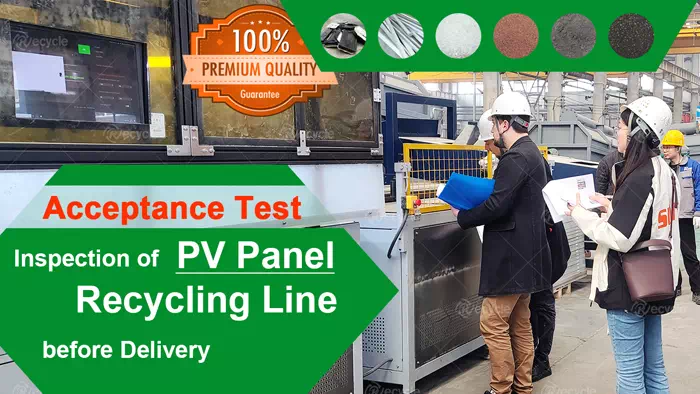News
Factors Affecting the Cost of Establishing a Solar Panel Recycling Plant
Time:2024-07-03 15:56:22
As more and more solar panels reach the end of their lifespan, proper disposal and recycling of these panels has become critical to sustainable energy practices. Establishing solar panel recycling plants plays a crucial role in this process. However, setting up such a plant requires thorough market research and careful planning. The cost of setting up a solar panel recycling plant varies widely and is influenced by factors such as location, size, technology and machinery used, and compliance with regulations.

Solar Panel Recycling Plant Acceptance Test
Technology and machinery:
Conducting comprehensive market research will help provide insight into the latest recycling technologies, machinery, and regulatory requirements. This step is critical in determining the most efficient and environmentally friendly process for a solar panel recycling plant. The main purpose of recycling solar panels is to extract and reuse valuable materials such as silicon, glass, and metals (e.g., aluminum and copper) while minimizing environmental pollution and resource waste. Here are some common solar panel recycling methods and their advantages and disadvantages:
1. Heat treatment method:
Thermal treatment methods can effectively separate different materials, especially glass and metal, at high temperatures. However, this method requires high-temperature heating and consumes a lot of energy. Therefore, the solar panel recycling machine using this technology is not only expensive but also requires a complete set of exhaust gas treatment systems.
2. Chemical treatment method:
The chemical treatment method has a high recovery rate, and the recovery of precious metals and silicon is more thorough. The recovered materials are of higher quality and suitable for remanufacturing. However, the use of chemical reagents may produce wastewater, and it takes a lot of money and time to meet the emission standards.
3. Mechanical recycling method:
The mechanical recycling method is suitable for industrial production and can batch process large quantities of used solar panels. It involves crushing and separation technologies that not only have high sorting efficiency but also produce additional products such as silicon, glass, copper, aluminum, and plastic. It is less polluting to the environment than other methods.
When considering the establishment of a solar panel recycling plant, it is critical to carefully evaluate technical and mechanical options in terms of cost-effectiveness, environmental impact, and regulatory compliance. Additionally, conducting a thorough cost analysis that takes into account factors such as labor, transportation, and overhead costs will help you make an informed decision.
Establishing a solar panel recycling plant is an important step towards sustainable energy practices. By properly disposing of and recycling solar panels, we can extract valuable materials, reduce waste, and minimize harm to the environment. Understanding the various factors that affect the cost of setting up a solar panel recycling plant is essential to planning and implementing an efficient and economically viable operation. Please do not hesitate to contact us if you would like more information or video footage.
LATEST NEWS
CONTACT US
Tel: 0086-13674945231(whatsapp)
Email: sunymachine@gmail.com
Add: Henan Communication Industrial Park) 5th St., Economic-Technological Development Zone, Zhengzhou